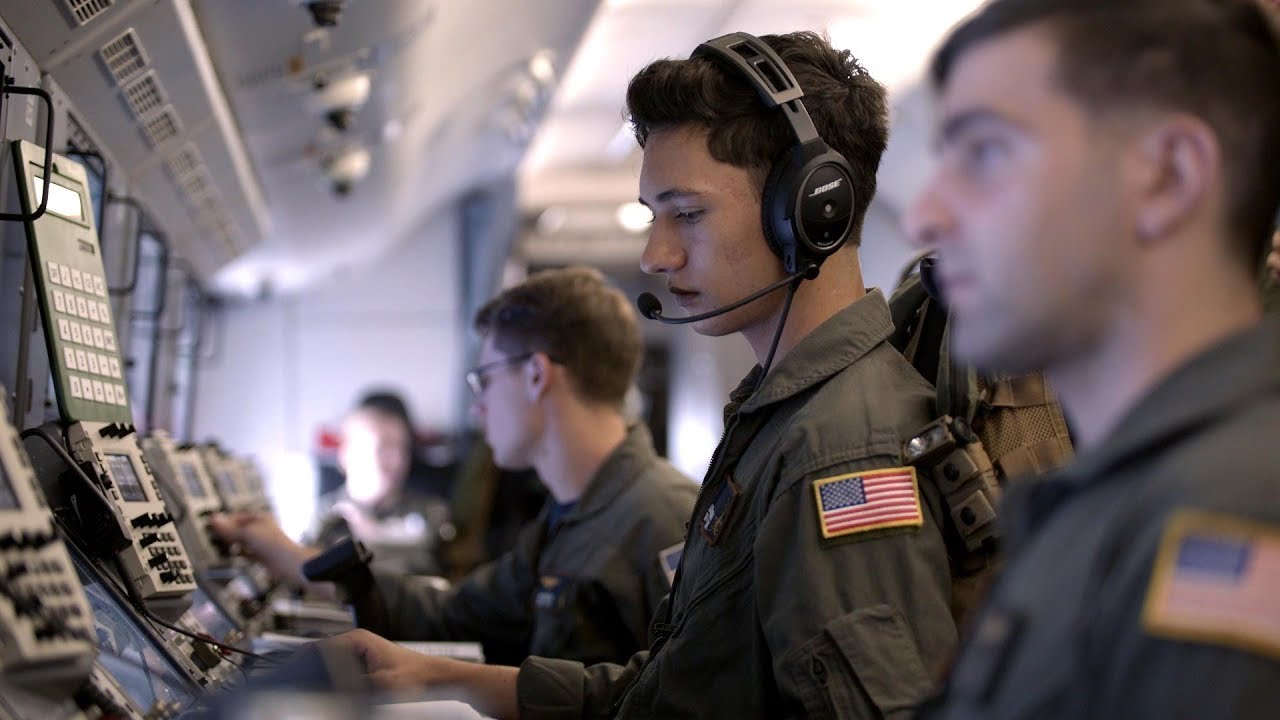What to Expect
More Information
Responsibilities
Naval Aircrewmen Operator (AWOs) produce intelligence products for aircrews in support of operations and tactical missions worldwide; detect, analyze, classify and track surface and subsurface contacts; operate an advanced sonar system utilizing sonobuoys, radar, Electronic Support Measures (ESM), Magnetic Anomaly Detector (MAD), Identification Friend or Foe/Selective Identification Feature (IFF/SIF) and Infrared Detector (IR). Their additional responsibilities include:
- Performing aircrew duties that support mission planning, classified material handling and training
- Handling ordnance
- Inspecting acoustic station equipment
- Operating mission equipment such as: advanced imaging multi-spectral sensors, radar for safety of flight and hand-held cameras
- Aircrew administration
- Flight/Ground training
- Joint Special Warfare operations
- Contributing directly to operations for the purposes of attaining and maintaining the squadron’s aircrew qualifications and certifications
- Demonstrating knowledge of all aircraft systems, passenger and cargo handling, safety procedures and equipment, federal and military regulations for passenger transport, emergency procedures and aircraft equipment
Work Environment
As an Aircrewman Operator, you’ll make the world your home. You may be assigned to sea or shore squadrons on almost any continent. You will have the opportunity to work in a variety of environments – from airborne aircraft to hangars, hangar decks to flight decks, and flight lines at air stations and on aircraft carriers.
Training & Advancement
Upon completion of initial training at Recruit Training Command Great Lakes (known as Boot Camp), you’ll report for specialized training, including:
Class "A" Technical School (13 weeks) in Pensacola, FL, for training in aviation theory and technical knowledge, aviation electrical systems and electronics theory.
Additional training may be required depending on your assignment. AWOs can expect to receive specialized training on specific aircraft or equipment relevant to your assignment before reporting for operational activities.
After you’ve completed training, you may be assigned to naval air stations, squadrons, aircraft carriers or other aviation facilities in the United States or overseas. As an AWO, you can expect approximately 50% of your assignments to take place at sea.
Promotion opportunities are regularly available but competitive and based on performance.
Advanced Training
Advanced training as an Aircrewman Helicopter may also be available during later stages of your career. For those with further leadership aspirations and a college degree, Officer roles may be available, providing opportunities to lead and train others.
Post-Service Opportunities
Specialized training received and work experience gained in the course of service can lead to valuable credentialing and occupational opportunities in related fields in the civilian sector.
Education Opportunities
Beyond offering access to professional credentials and certifications, Navy technical and operational training in the Flight Operations field can translate to credit hours toward a bachelor’s or associate degree through the American Council on Education.
You may also continue your education through undergraduate degree opportunities like the Navy College Program and Tuition Assistance and the Post-9/11 GI Bill.
Qualifications & Requirements
A high school diploma or equivalent is required to become an Enlisted Sailor in the Flight Operations field in the Navy. Those seeking a position as an Aircrewman Operator must be U.S. citizens who can meet eligibility requirements for a security clearance.
All aircrew candidates should possess the ability to swim prior to entering the program. In addition, they should possess manual dexterity, physical strength and be oriented toward working with tools and machinery.
They must be self-motivated, as well as be able to work as part of a team. Helpful attributes are an interest in ideas and information, resourcefulness, curiosity, competence with tools, equipment and machines, good manual dexterity and teamwork.
Normal hearing and color perception are required for this rating.
General qualifications may vary depending upon whether you’re currently serving, whether you’ve served before or whether you’ve never served before.
Part-Time Opportunities
There are part-time opportunities available as an Aircrewman Operator.
Serving part-time as a Navy Reserve Sailor, your duties will be carried out during your scheduled drilling and training periods. During monthly drilling, Aircrewmen Operators in the Navy Reserve typically work at a location close to their homes.
For annual training, Aircrewmen Operators may serve anywhere in the world, whether on a ship at sea or at bases and installations on shore.
Take a moment to learn more about the general roles and responsibilities of Navy Reserve Sailors.
Most of what you do in the Navy Reserve is considered training. The basic Navy Reserve commitment involves training a minimum of one weekend a month (referred to as drilling) and two weeks a year (referred to as Annual Training) – or the equivalent of that.
Aircrewmen Operators in the Navy Reserve serve in an Enlisted role. Before receiving the ongoing professional training that comes with the job, initial training requirements must be met.
For current or former military Enlisted servicemembers: prior experience satisfies the initial Recruit Training requirement – so you will not need to go through Boot Camp again.
For those without prior military experience: you will need to meet the initial Recruit Training requirement by attending Boot Camp in Great Lakes, IL. This training course will prepare you for service in the Navy Reserve and count as your first Annual Training.

































































































































